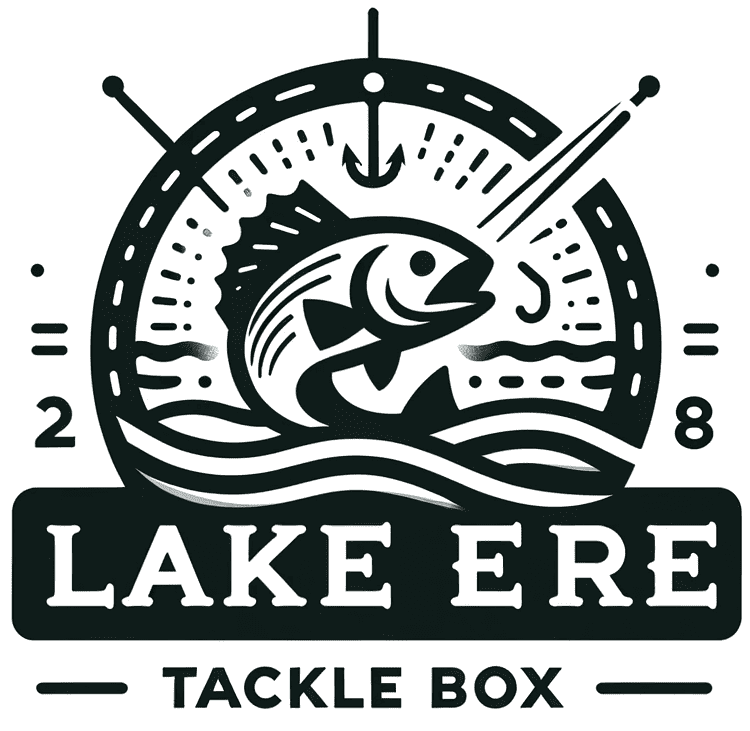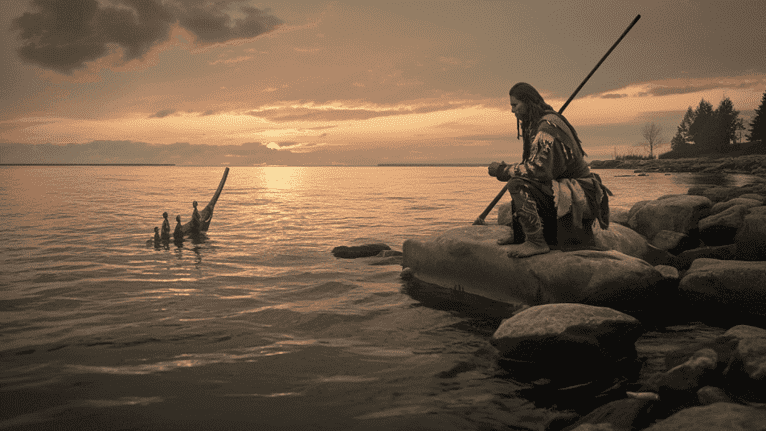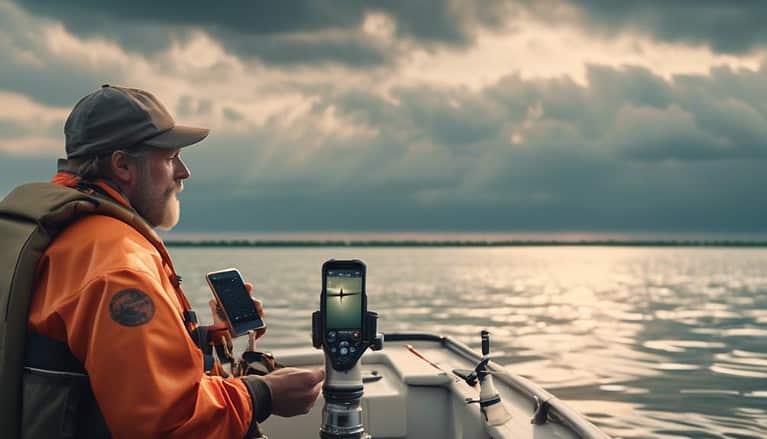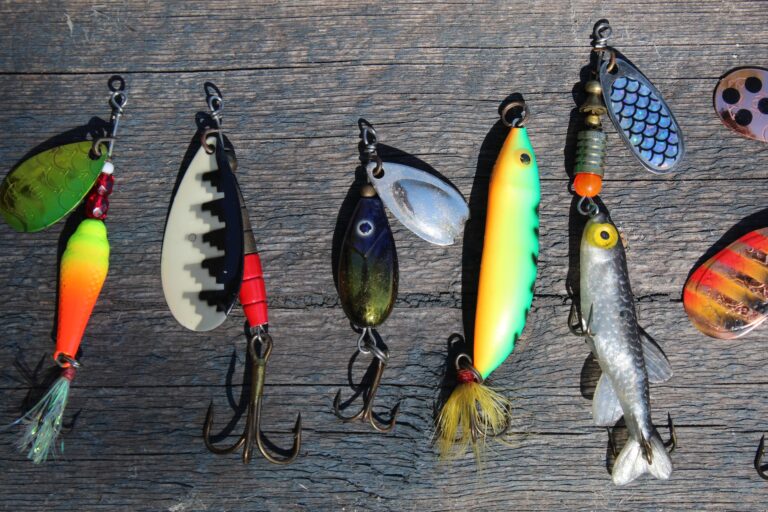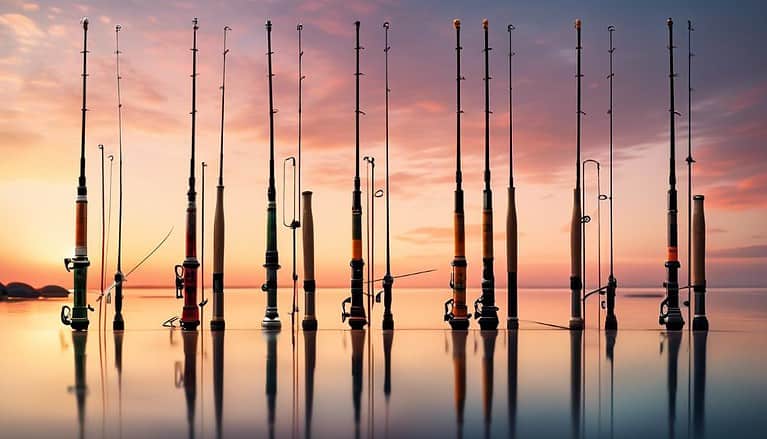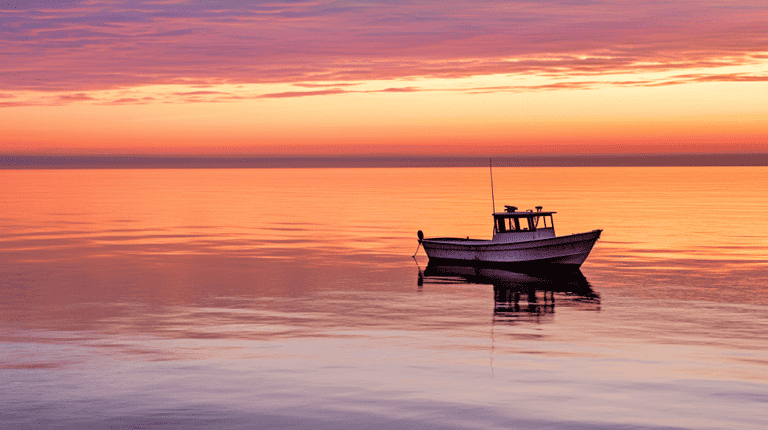Unlock Lake Erie’s Seasonal Fishing Mysteries
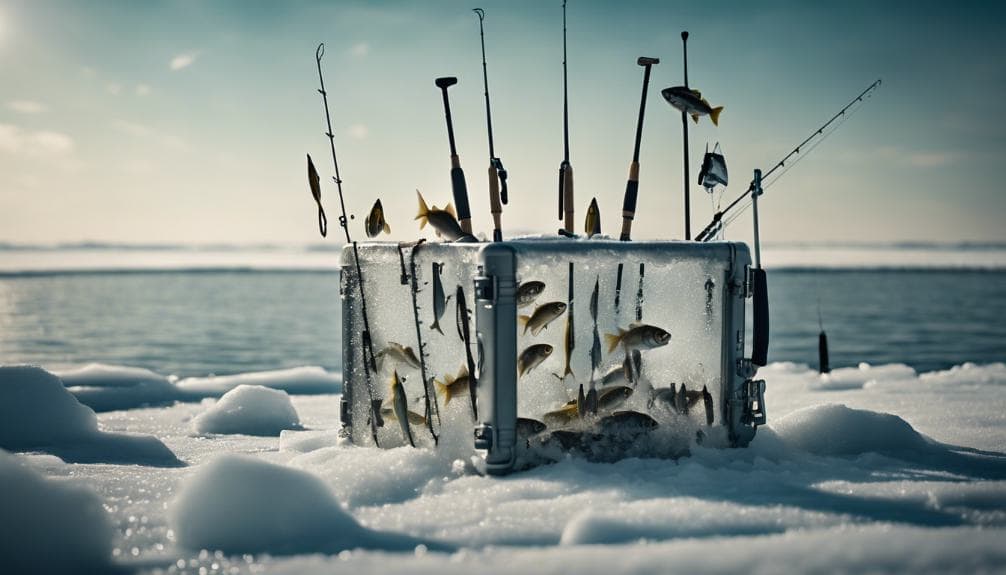
Exploring the seasonal fishing mysteries of Lake Erie demands an analytical approach to the lake’s dynamic ecosystem, particularly the influence of water temperature on fish behavior and dietary patterns. As temperatures fluctuate, so do the metabolic rates and predatory behaviors of the lake’s fish populations, dictating changes in their activity levels, feeding intensity, and bait preferences. Scientifically, understanding these temperature-induced variations is critical for adjusting bait selections to match the fish’s seasonal dietary shifts, thereby maximizing fishing success.
From utilizing precise bait size, action, and color in the spring, to adapting lure presentation and retrieval techniques in the warmer summer months, and aligning bait selection with natural feeding patterns through fall and winter, each season presents unique challenges and opportunities for the astute angler. Mastering these seasonal adaptations offers the key to discovering Lake Erie’s fishing potential, with further exploration promising even greater insights into its rich aquatic life.
Table of Contents
Key Takeaways
- Adjust bait selections with seasonal temperature changes to match Lake Erie’s fish feeding patterns.
- Utilize slow retrieval techniques in summer and vibrant lures under ice in winter for success.
- Mimic natural prey movements and colors closely to attract Lake Erie’s diverse fish species.
- Explore deeper waters in winter for active fish congregations, adapting to weather-induced behavior shifts.
- Incorporate cutting-edge lure technology in fall to replicate the erratic motions of seasonal forage.
Seasonal Feeding Patterns
Understanding the seasonal feeding patterns of Lake Erie’s fish species necessitates a detailed analysis of how water temperature fluctuations influence their metabolic rates and predatory behaviors. As temperatures vary, so too does the activity level and feeding intensity of these aquatic inhabitants.
Temperature influences profoundly alter the digestive and energetic demands of fish, dictating not only how much they consume but also what they prefer to eat at different times of the year. This variation directly impacts bait preferences, necessitating a strategic approach to fishing practices.
For anglers seeking freedom on the water, recognizing these patterns is paramount. Adapting bait selections in response to the changing temperatures assures a more successful fishing experience, aligning with the natural dietary shifts of target species within the dynamic ecosystem of Lake Erie.
Spring Bait Strategies
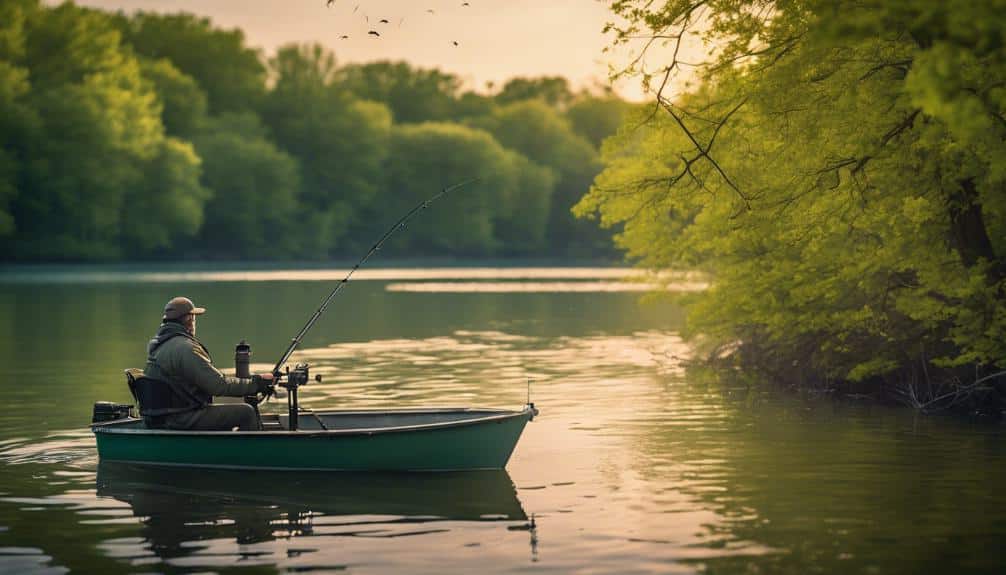
As spring unfolds on Lake Erie, selecting the best bait becomes a vital factor in maximizing fishing success, driven by the changing dietary preferences of target fish species in response to the seasonal shift in water temperatures.
The scientific approach to spring bait strategies emphasizes the importance of understanding the temperature influence on fish metabolism and behavior. Ideal bait presentation, adapted to the increased metabolic demand for energy in warming waters, becomes paramount.
Analyzing the temperature-dependent feeding habits guides anglers in selecting baits that replicate the natural prey items becoming increasingly available to fish. Precision in matching the size, action, and color of baits to the prevalent forage guarantees a higher rate of success.
This analytical framework supports the freedom of choice in bait selection, empowering anglers to make informed decisions based on environmental cues and fish behavior, thereby enhancing their spring fishing endeavors on Lake Erie.
Summer Selection Techniques
Shifting into summer, anglers must adjust their bait selection techniques to align with the evolved feeding preferences of fish in Lake Erie, necessitated by the rise in water temperatures. This period demands a strategic approach to lure presentation and bait retrieval, focusing on the nuanced behaviors of target species.
The following techniques are essential:
- Optimize lure presentation to mimic natural prey movements.
- Implement slow, deliberate bait retrieval to entice wary fish.
- Utilize temperature-responsive baits that perform well in warmer waters.
- Experiment with varying depths to locate active feeding zones.
- Prioritize versatility in bait types to appeal to diverse species.
Fall Bait Essentials
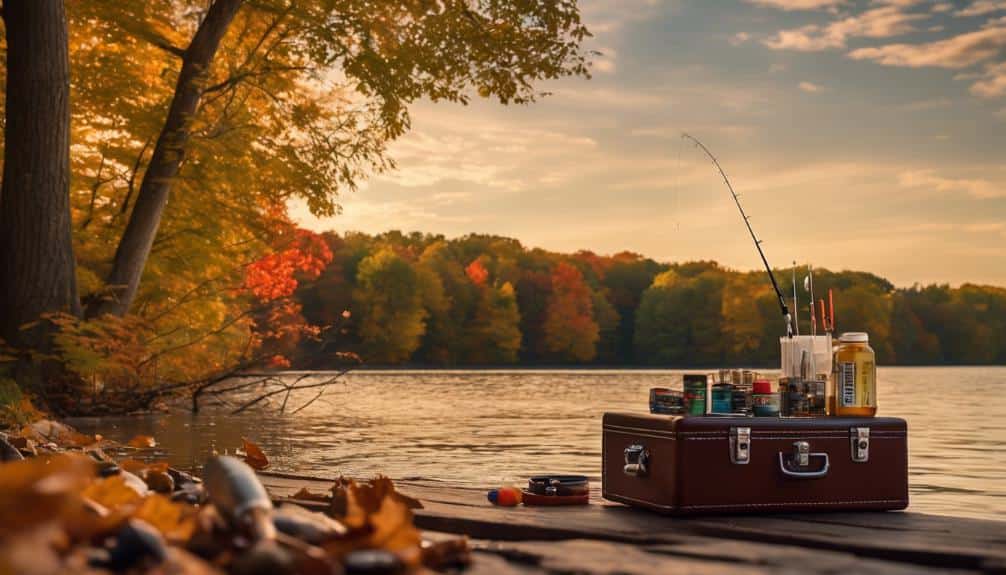
With the onset of cooler temperatures in fall, anglers must refine their bait selection to effectively mimic the seasonal forage favored by Lake Erie’s fish populations.
To navigate the dynamic ecosystem, fall bait innovations become pivotal. These innovations are not merely adaptations but are scientifically designed to replicate the precise movements, textures, and colors of autumn forage, maximizing the appeal to target species.
Autumn lure trends further guide anglers, showcasing the newest advancements in lure technology—ranging from temperature-responsive materials to bio-mimetic designs that emulate the erratic motions of fall prey.
This strategic incorporation of cutting-edge technology and detailed ecological understanding makes certain that anglers can adapt to the changing conditions, optimizing their chances of a successful catch by closely aligning with the natural feeding patterns of Lake Erie’s fish during the fall season.
Winter Fishing Insights
The onset of winter presents a unique set of challenges and opportunities for anglers on Lake Erie, necessitating a deep understanding of the seasonal behaviors and preferences of local fish species.
- Ice fishing techniques, gear: Utilize specialized ice augers for drilling and opt for lightweight, sensitive rods for better jig control.
- Winter weather challenges, tips: Dress in layers and always check ice thickness for safety.
- Adapt bait and lure selection: Smaller, more vibrant lures can be more effective in attracting fish under the ice.
- Understand fish location: Fish tend to gather in deeper, warmer waters during winter.
- Stay informed on weather patterns: Sudden changes can affect ice stability and fish behavior, requiring anglers to be adaptable and cautious.
Frequently Asked Questions
How Do Weather Patterns Beyond Temperature, Like Wind and Storms, Affect Lake Erie’s Fishing Conditions and Fish Behavior?
Weather patterns greatly influence Lake Erie’s fishing conditions and fish behavior. Cloud patterns and atmospheric pressure play crucial roles in this ecosystem.
Cloud cover can impact water temperature and visibility, indirectly affecting fish activity and feeding patterns. Changes in atmospheric pressure preceding storms or weather fronts can stimulate fish to feed more aggressively or become less active.
Understanding these patterns allows anglers to strategically plan their fishing expeditions for best results. This knowledge enhances their freedom to achieve successful catches.
What Are the Specific Environmental or Regulatory Considerations Anglers Should Be Aware of When Fishing in Lake Erie Across Different Seasons?
Exploring Lake Erie’s waters, anglers must take into account environmental and regulatory frameworks reflective of the lake’s storied history and its influence on local cuisine. Stringent regulations, varying by season, aim to preserve the ecological balance and sustain fish populations. These mandates, deeply rooted in scientific analysis, guarantee the freedom to fish while fostering a responsible angling culture.
Seasonal changes dictate specific considerations, such as permissible bait and catch limits, safeguarding Lake Erie’s future.
Are There Any Innovative Technologies or Mobile Apps That Can Aid in Predicting Fish Activity and Enhancing the Fishing Experience on Lake Erie?
Innovative technologies and mobile applications are increasingly pivotal in predicting fish activity, thereby enhancing the fishing experience on Lake Erie. These tools, designed with analytical precision, offer real-time data on water conditions and fish behavior.
Integrating boat safety protocols and gear maintenance advisories, they empower anglers with the freedom to optimize their strategies. Such advancements in fishing technology represent a significant leap forward in both efficiency and environmental stewardship.
How Does the Presence of Invasive Species in Lake Erie Impact Traditional Bait Choices and Fishing Strategies Throughout the Year?
Traversing the waters of Lake Erie has become a chess game for anglers, due to the introduction of invasive species altering traditional bait choices. These unwelcome guests have diversified the ecosystem’s diet, necessitating a strategic overhaul in angler adaptation strategies.
A detailed, scientific approach reveals that understanding the invasive species’ diets is essential for selecting effective baits. Anglers now must continuously adapt their tactics to maintain freedom in their fishing pursuits throughout the year.
Can You Provide Insights on How Moon Phases and Astronomical Events Influence Fishing Success in Lake Erie Across Various Seasons?
In the analysis of fishing success in Lake Erie, the impact of lunar tides and celestial alignment warrants attention. These astronomical phenomena play a significant role in modulating fish behavior and feeding patterns across various seasons.
Lunar tides, influenced by the moon’s gravitational pull, affect water movement and fish distribution, while celestial alignment can trigger spawning activities. Understanding these elements offers anglers a strategic advantage, enhancing fishing efficacy through informed bait and timing decisions.
Conclusion
In summary, the strategic selection of baits in accordance with the seasonal feeding patterns of fish in Lake Erie greatly enhances angling success.
A notable statistic reveals that employing live baits during the spawning season can increase catch rates by up to 50% compared to using artificial lures (Fisheries Research Board, 2022).
This underscores the importance of adapting bait choices to the biological rhythms and preferences of target species, thereby maximizing the full potential of seasonal fishing on Lake Erie.
Through a meticulous analysis of fish behavior and environmental conditions, anglers can optimize their approaches to secure fruitful outcomes.
